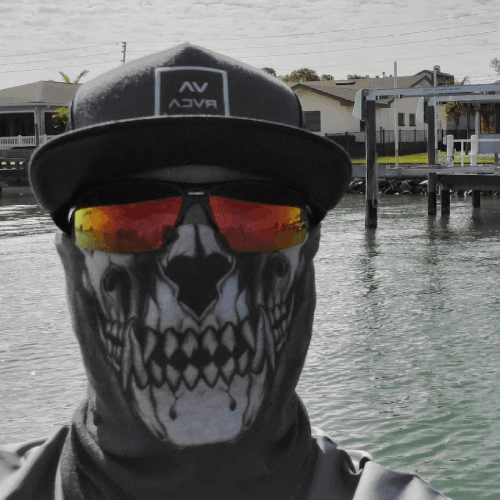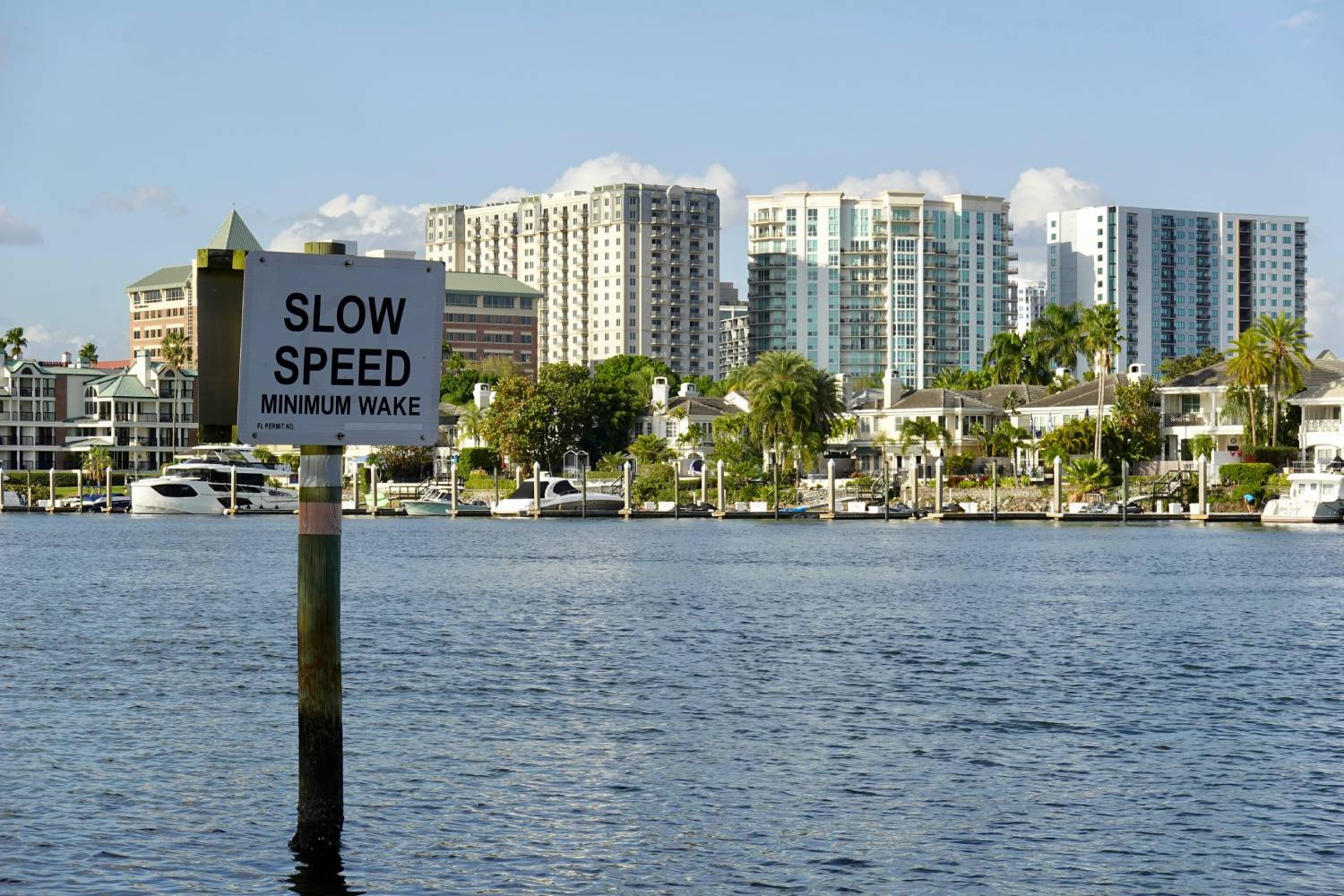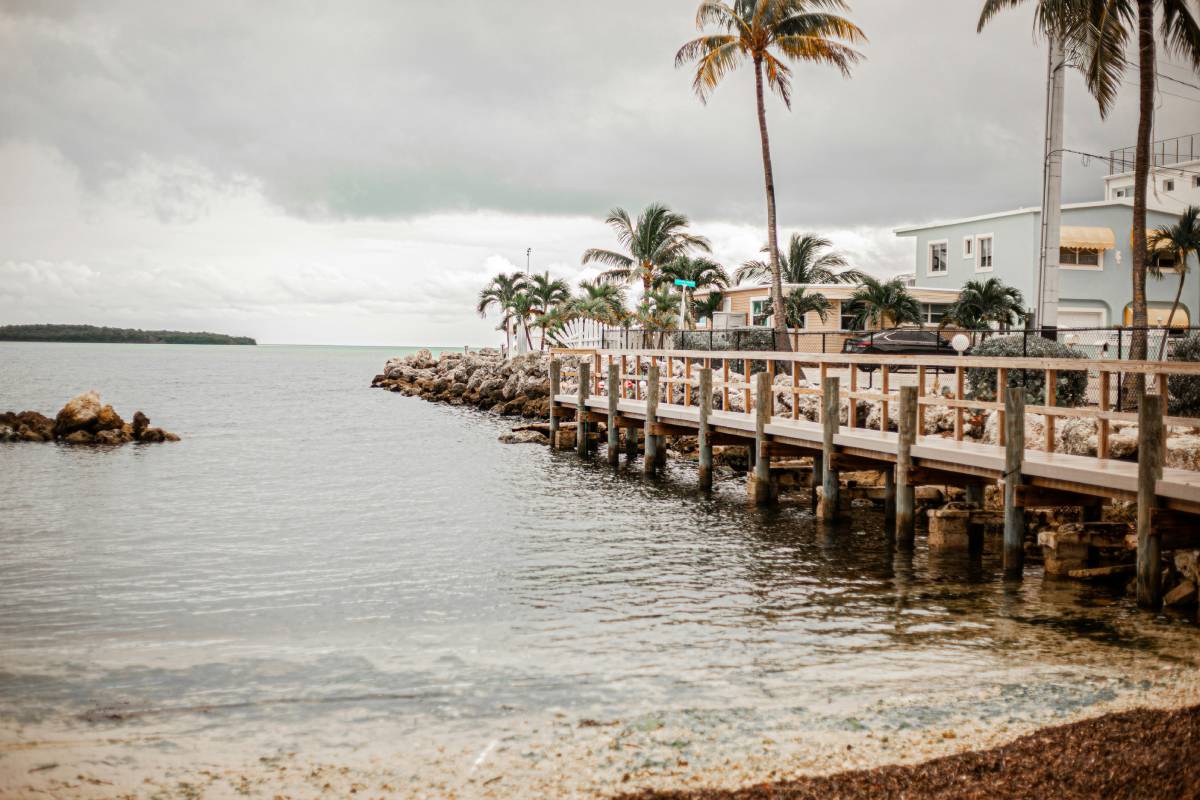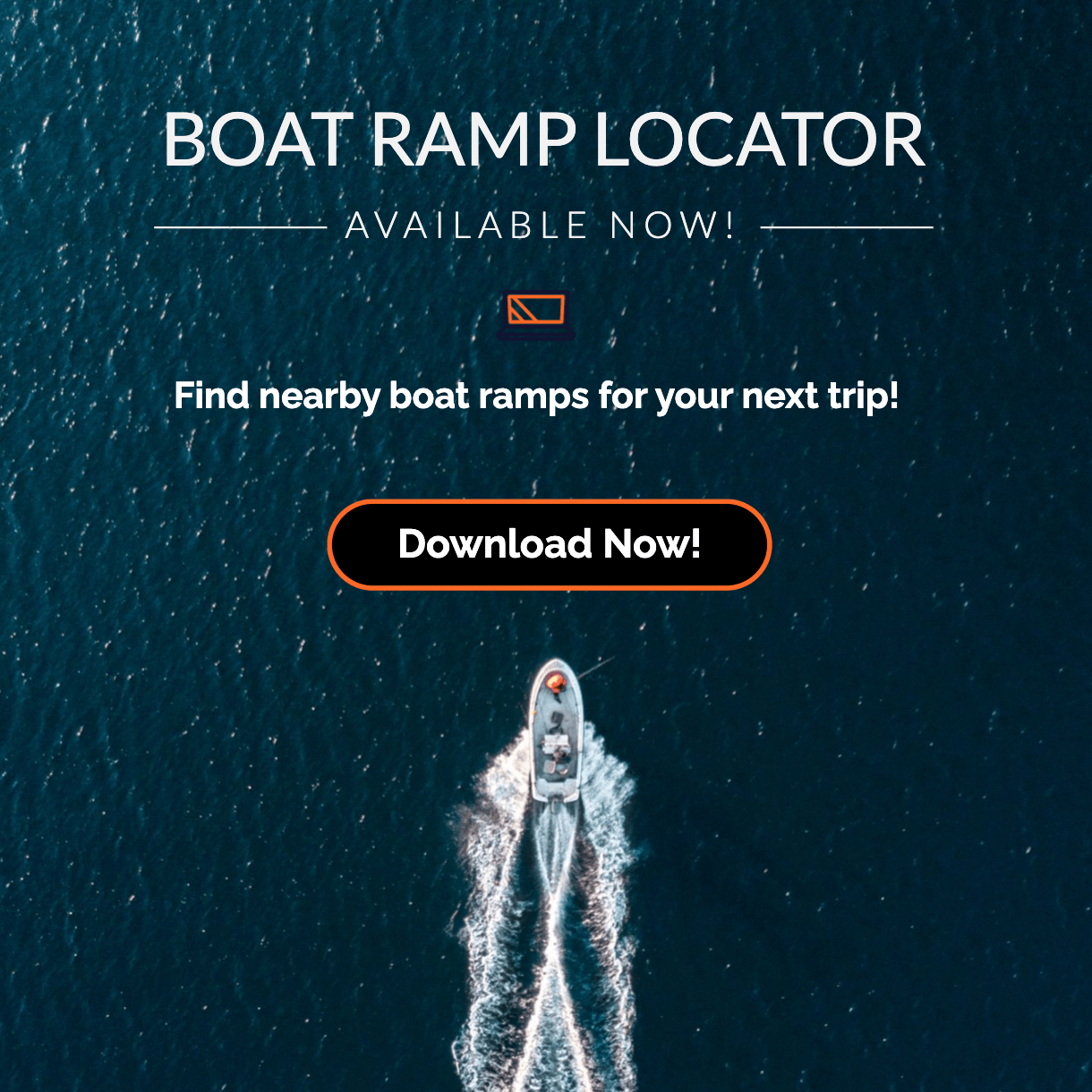

By Craig Wheeler
Mon Jun 23 2025
Launching a Boat From a Trailer: Pro Tips for Smooth Setup
Launching a boat might seem like a simple task, but it requires more than just backing into the water. A well executed launch involves preparation, awareness, and a clear understanding of your equipment. Whether you’re new to boating or have been towing for years, knowing how to launch a boat from a trailer properly can make or break your day on the water.
Proper technique not only protects your boat and vehicle but also ensures the safety of everyone involved. It helps prevent avoidable mishaps such as trailer damage, boat drift, or accidents at the ramp. Mastering the process also helps maintain the flow of traffic at busy launch sites and keeps the experience stress free for everyone.
Common Pitfalls First Time Boaters Face
Even the most enthusiastic new boaters can stumble when launching a boat for the first time. Some forget to install the drain plug, while others fail to prepare their gear before getting in line. Backing a trailer down a ramp can be a challenge on its own, especially if you’re not comfortable using your mirrors.
Other common mistakes include not removing the tie downs before launching, leaving the engine untested until it’s already in the water, or misjudging how deep to submerge the trailer. These errors are not just inconvenient, they can be costly. The good news is that they are entirely preventable with a bit of planning and the right know how.
Understanding Your Boat and Trailer Setup
The Anatomy of a Boat Trailer
To safely and efficiently launch your boat, you need to be familiar with how your trailer functions. Most trailers are equipped with a winch, safety chains, bunks or rollers, trailer lights, and a hitch coupler. Each component has a specific purpose, and understanding how they work together is key.
Bunk trailers use carpeted boards to support the boat’s hull and are ideal for smaller to mid size boats. Roller trailers use rotating wheels for easier loading and unloading, especially helpful at shallow or uneven ramps. Knowing which type you have will help determine how much of the trailer to submerge and how to position the boat during retrieval.
Knowing Your Vehicle’s Towing and Launching Capacity
Not all tow vehicles are created equal. Before heading to the ramp, make sure your vehicle is rated to tow the combined weight of your boat, trailer, engine, fuel, and gear. This information is usually found in the owner’s manual or on the manufacturer’s towing guide.
Also important is how your vehicle performs at the ramp. Rear wheel drive trucks can struggle with traction on wet, slippery surfaces, while four wheel drive vehicles offer better control. Tire condition, brake performance, and proper lighting connections between your vehicle and trailer should also be verified before departure.
Essential Gear and Equipment Checklist
Items You Must Have Before Arriving at the Ramp
Preparation starts long before you hit the water. A successful boat launch begins with having the right gear in place. Here are the essential items every boater should carry:
- Valid boat registration and launch permits
- Boat keys and fobs
- Drain plug (installed before launching)
- Dock lines and fenders
- Winch strap and backup safety chains
- Charged battery and fuel
- Life jackets for each person on board
- Fire extinguisher and signaling devices (whistle, horn, flares)
- Trailer jack and lug wrench
- Spare trailer tire
- Tire chocks and wheel blocks
Having this checklist complete before you even get to the staging area reduces the chance of delays or emergency turnarounds.
Optional but Useful Tools That Make Launching Easier
While not mandatory, some tools can simplify the launch process and make your day much more efficient:
- Trailer guide posts for easier alignment
- Backup camera or trailer mirror extensions
- Winch remote control or electric winch
- Non slip gloves for rope or strap handling
- Trailer tongue step or portable ladder
- LED trailer lights for improved visibility
- Lubricated rollers or bunk slides for easier boat movement
These optional tools can be particularly helpful for solo launchers or for those launching in difficult terrain or weather.
Pre Launch Preparation in the Staging Area
What to Check Before Getting in Line
Before you approach the launch ramp, pull into the designated staging area to prep your boat. This is not only considerate to others but also crucial for your own safety and efficiency. The staging area is where you do everything necessary before getting close to the water.
Check that your boat keys are accessible and the drain plug is installed. Remove all tie downs securing the boat to the trailer except the winch strap at the bow. Load any gear, coolers, or electronics into the boat at this point to avoid blocking ramp traffic later. It is also a good time to test electronics, bilge pump, and steering system while still on land.
Securing and Preparing the Boat for Water Entry
Set up your dock lines and attach fenders if needed to protect the hull when docking. If launching solo, tie a bow line long enough to hold from the ramp or dock. Check that the fuel vent is open, the battery switch is on, and all systems are functioning. Raise the outboard or stern drive unit before backing into the water to prevent damage.
This is also when you want to check the condition of your winch strap and safety chain. A frayed or corroded strap could snap under load, causing damage or injury. If you are using roller bunks, lightly wetting them before launch can make sliding easier.
Checklist to Prevent Launching Mishaps
Before getting in line at the ramp, mentally review this quick checklist:
- Drain plug installed
- Keys in hand or ignition
- Tie downs removed (except winch strap)
- Fenders and lines set up
- Gear loaded and secured
- Trailer lights functioning
- Outboard or drive unit raised
- Safety chain inspected
- Electronics tested
This simple routine can prevent the majority of first time launch mistakes and save you both time and frustration.
How to Launch a Boat From a Trailer
Aligning the Vehicle and Trailer at the Ramp
Once you are ready to launch, back your vehicle and trailer down the ramp slowly and steadily. Use your side mirrors to keep the trailer straight and correct in small increments. If the ramp has multiple lanes, choose the one with the least congestion and best angle for your boat.
Make sure the boat is centered on the trailer as you approach the water. Back down until the rear of the boat just starts to float. For bunk trailers, the rear tires of the tow vehicle may need to be near the water line. For roller trailers, less submersion is often required.
Backing Down the Ramp with Precision
Take your time when backing down the ramp. If possible, have a partner spot you from outside the vehicle. Use small steering corrections and go slow. If you get off track, pull forward and straighten out before trying again. There is no shame in resetting if it prevents a mistake.
Make sure your parking brake is set before exiting the vehicle. If your ramp has a steep incline, consider placing wheel chocks behind the rear tires to add an extra layer of safety.
Safely Releasing the Boat Into the Water
Once the boat is sufficiently afloat, unhook the winch strap and safety chain while keeping control of the bow line. If you are launching with a partner, they can guide the boat off the trailer while you stay in the vehicle. If launching solo, use the bow line to slowly walk the boat off the trailer and guide it to the dock.
Never push the boat off the trailer without a secure line attached. Doing so could lead to a drift or damage if the wind or current is strong. Once the boat is tied off securely to the dock, move your vehicle and trailer to the parking area to make room for the next person.
Tips for Solo Boat Launching
Equipment to Make Solo Launching Manageable
Launching a boat by yourself can be intimidating at first, but with the right gear, it becomes very manageable. Long bow and stern lines, rubber coated dock hooks, and a boat trailer with guide rails can all help make the process smoother. Some solo boaters also use remote control winches or bow step ladders to assist with loading and unloading.
Adding a transom saver, roller guides, and bunk slicks can reduce resistance and help the boat glide off smoothly without needing extra hands.
Step by Step Process When You Are Launching Alone
Here is a breakdown of how to launch a boat solo:
- Park in the staging area and prep the boat fully
- Tie long lines to both bow and stern
- Back down the ramp slowly until the boat begins to float
- Exit the vehicle and release the winch strap
- Use the bow line to walk the boat off the trailer and secure it to the dock
- Return to your vehicle and park in the designated area
Take your time and double check each step. With practice, solo launching can become second nature.
Courtesy and Etiquette at the Boat Ramp
Understanding Unspoken Boat Ramp Rules
One of the best ways to ensure a smooth experience at the boat ramp is by following basic courtesy. These unspoken rules keep the process efficient and respectful for everyone. First and foremost, always complete your prep work in the staging area. The ramp itself should only be used for quick launching or retrieval, not for rigging or organizing gear.
Allow other boaters plenty of space and avoid crowding at the dock. Wait your turn, and never cut in line. If someone is having trouble, offer help instead of criticism. Boat ramps are shared spaces, and mutual patience goes a long way.
How to Be Efficient and Avoid Holding Others Up
Efficiency at the ramp is all about preparation and confidence. Know your steps before you arrive, and practice them if necessary. Keep conversations and distractions to a minimum during the launch. If you’re unfamiliar with the ramp or conditions, scout it ahead of time or watch a few launches before taking your turn.
Have your lines ready, your safety equipment in place, and your engine checked before backing in. As soon as your boat is launched and tied off, move your vehicle to the parking area to clear the way for the next boater.
Troubleshooting Common Problems During Launch
Boat Will Not Come Off the Trailer
If your boat refuses to budge when you try to launch, first check if the winch strap or safety chain is still connected. If those are removed and the boat still will not move, your trailer may not be deep enough into the water.
Another reason could be friction between the bunks and the hull. On bunk trailers, it helps to back a bit deeper or to gently rock the boat using the bow line. If rollers are stuck or corroded, you may need to apply marine safe lubricant or replace them.
Issues with Backing the Trailer Down the Ramp
Backing a trailer can be frustrating, especially for beginners. If the trailer swerves out of line, do not try to correct it quickly. Small steering movements are more effective. Use your mirrors, not just your rear window, and consider installing a backup camera if your vehicle does not have one.
Practicing in an empty parking lot before your first launch can improve your skill and confidence. Marking the centerline with tape or chalk can also help you stay straight as you back down.
Slippery or Crowded Conditions
Slippery ramps are a real hazard. Algae buildup or smooth concrete can reduce traction. Use a four wheel drive vehicle if possible, and avoid sudden acceleration or braking. Tire chains or traction pads can be used in extreme cases.
Crowded conditions require extra patience. Stick to your preparation routine, do not rush, and keep communication clear with your launch partner if you have one. Sometimes the best option is to wait a few minutes for the congestion to clear before attempting your launch.
Best Practices for Loading the Boat Back on the Trailer
Aligning the Boat Properly for Retrieval
Retrieving your boat at the end of the day can be just as tricky as launching, especially if wind or current are working against you. Approach the trailer slowly and aim to center the bow with the trailer’s guide posts or bunks. Use short bursts of power to correct your alignment.
If you miss the trailer or come in too fast, circle around and try again. Do not force it, and avoid using excessive throttle which can damage the ramp’s structure or stir up sediment.
Securing the Boat for Travel After Loading
Once the boat is on the trailer and centered, attach the winch strap securely and engage the safety chain. Shut off the engine and raise the drive unit before pulling up the ramp. Once you reach the staging area, drain the bilge, remove any trash, and check that all gear is secure.
Reinstall all tie downs before heading out. Double check your lights and trailer connections. A quick walk around inspection takes less than a minute and can prevent major issues on the road.
Safety Tips for a Smooth Boat Launch Experience
Launching in Different Weather or Water Conditions
Weather can change rapidly, and launching a boat in poor conditions requires extra caution. Rain, strong winds, or choppy water can complicate the process. Before you leave home, check the local marine forecast and plan accordingly.
If wind is pushing across the ramp, consider launching into the wind for better control. Avoid launching in strong currents unless you are confident in your handling. Slippery ramps may require slower movements and the use of four wheel drive for added traction.
If visibility is limited, such as during fog or low light hours, use your vehicle’s hazard lights and make sure all trailer lights are working. Move deliberately and make safety your top priority.
Preventing Personal Injury and Property Damage
Injuries and accidents at the boat ramp are more common than people think. Always wear non slip footwear, especially on wet ramps. Never stand directly behind the boat or trailer while launching or retrieving. Use gloves when handling lines and winch straps to protect your hands.
Keep children and pets clear of the launch area. Only one person should guide the boat while others stay at a safe distance. If someone is helping, establish clear communication and make sure they know their role before starting.
Property damage usually happens when things are rushed. Take your time, use a checklist, and treat the process as a team operation rather than a race.
Training Tips for First Time Boat Owners
Practicing in a Low Traffic Area
The best way to get comfortable with boat launching is to practice in a quiet setting. Look for boat ramps that are less busy during weekday mornings or offseason months. A wide, gently sloped ramp with a dock makes learning easier and more forgiving.
Use these practice sessions to work on trailer backing, timing your engine start, and controlling your boat with lines and throttle. Each repetition builds confidence and reduces launch day stress.
Take note of how your trailer behaves in the water, how far to submerge it, and how your boat slides off. These are small details that make a big difference in real situations.
Getting Assistance from an Experienced Boater
If you have access to a friend or mentor with boating experience, invite them to join you for a launch session. They can provide tips, correct your technique, and help you troubleshoot unexpected issues. Just having an extra set of eyes and hands makes the experience safer and more manageable.
Local boating clubs and marinas sometimes offer training for new boaters. These workshops often include ramp etiquette, trailering lessons, and safety protocols. The more knowledge you gain up front, the smoother your learning curve will be.
Legal and Environmental Considerations
State or Local Launching Laws
Every boat ramp and waterway falls under specific regulations. Make sure you know the rules for your area, including whether permits are required, parking limits, or local launch fees. Some ramps require permits to be displayed on your vehicle or trailer.
Noise regulations, no wake zones, and speed limits may also apply. Familiarize yourself with signage near the ramp and comply with posted rules. Ignorance of local laws is not a valid excuse and can result in fines or citations.
Avoiding Environmental Harm
Responsible boating means protecting the environment. Always inspect your boat and trailer for aquatic vegetation, mud, or invasive species before leaving the ramp. Clean, drain, and dry all equipment as required by many local and federal guidelines.
Use fuel absorbent pads when refueling to avoid spills. Do not run your motor near sensitive shoreline areas, and never discard trash or waste in the water. Following these simple steps helps preserve the ecosystem and ensures boat ramps stay open to the public.
Launching at Night or in Low Visibility
Extra Gear for Safe Low Light Launching
Launching a boat in the dark requires extra preparation and the right equipment. Make sure your trailer lights, reverse lights, and vehicle headlights are in good working order. A headlamp or hands free LED light can help you stay safe while keeping both hands available.
Bring extra dock lines, reflective tape, and flashlights to improve visibility around the launch site. Glow in the dark or illuminated trailer guide posts are also helpful for aligning your boat in the dark. Wear high visibility clothing and be mindful of other boaters who may also be launching or retrieving at night.
Tips for Avoiding Accidents in Poor Visibility
When launching in fog, dusk, or early morning light, move slowly and with heightened awareness. Use your horn or whistle when necessary to alert others to your presence. Assign a partner to act as a spotter and maintain verbal communication while backing down the ramp.
Avoid using high beam headlights that could blind others or reflect off the water. Instead, use low beams or parking lights combined with external task lighting to see the ramp clearly. Keep a weather radio or mobile app handy in case conditions change quickly.
Maintaining Your Trailer and Launch Equipment
Regular Maintenance Tips
A well maintained trailer is essential for safe and consistent boat launching. After each use, rinse your trailer with fresh water, especially if you launch in saltwater environments. Inspect tires for wear and keep them inflated to the recommended pressure.
Check the brake system, winch strap, and lights regularly. Apply grease to wheel bearings as needed, and replace rusty hardware before it becomes a hazard. Inspect your safety chains and coupler connection before every trip.
Keeping a basic tool kit in your vehicle ensures you can handle minor issues at the ramp without delay.
What to Check After Each Launch
Once your boat is retrieved and secured, inspect the trailer and towing setup before leaving. Drain the bilge, clear any debris from the bunks or rollers, and stow loose gear safely. Confirm that the winch is locked and the safety chain is attached.
Check that the trailer lights are still connected and functioning. Look for any signs of damage to the hull, fenders, or tires. A simple walk around can catch potential problems before they lead to costly repairs or road trouble.
Key Takeaways for Launching
Launching Becomes Easier With Practice
Like any skill, boat launching improves with experience. The more you practice and familiarize yourself with your specific setup, the more confident and efficient you will become. Early attempts may feel overwhelming, but with patience and repetition, it quickly becomes second nature.
Stay calm, take your time, and always keep safety at the forefront. Each successful launch builds your knowledge and readiness for future trips.
A Proactive Approach Prevents Problems
A smooth launch is the result of preparation, attention to detail, and mutual respect at the ramp. Use checklists, inspect your equipment regularly, and do not hesitate to ask for help or guidance when needed.
Whether launching solo or with a crew, a proactive mindset and good etiquette help ensure a successful and enjoyable day on the water.
Frequently Asked Questions
How deep should I back my trailer into the water?
This depends on the type of trailer and boat you have. For bunk trailers, the water should usually reach just below the tops of the fenders. For roller trailers, you may not need to go as deep. The goal is to let the boat float just enough to slide off easily while keeping control.
Can I launch a boat without a winch?
It is possible, but not recommended. A winch allows for safe control of the boat during launch and retrieval. Without one, you risk damaging the boat, the trailer, or even injuring yourself.
What is the best type of boat ramp for beginners?
Look for a wide, gently sloped ramp with clear signage and a dock alongside. Ramps with low traffic and calm waters are ideal for first timers to practice and build confidence.
How do I launch a boat in windy conditions?
Point the bow into the wind if possible and use long lines to maintain control. Have a spotter help you steady the boat, and avoid launching in high wind unless you are experienced. Use fenders to protect against dock impacts.
How long should I take at the ramp?
Aim to keep your launch or retrieval under five minutes once you are at the water. Do all your prep in the staging area so you are ready to go quickly. Efficient use of time shows respect for others waiting in line.
Looking for boat ramps near you? Use our free app to find launch locations with facility info and directions. Save your favorite boat ramps for quick access anytime. Download Boat Ramp Locator on Google Play.
Related Articles
-
 Sat Jul 19 2025
Sat Jul 19 2025Guide to Boat Ramps in Tampa Bay
Tampa Bay has no shortage of accessible boat ramps, and many of them are open around the clock.
-
 Sat Jul 12 2025
Sat Jul 12 2025Top 10 Hotels With Boat Docks in the Florida Keys
Finding a hotel that also offers boat docking can turn a good trip into an unforgettable seafaring a
-
 Wed Jul 09 2025
Wed Jul 09 2025How to choose the best boat ramp on the Suwannee River for your boat size.
The Suwannee River is a legendary waterway in North Florida, winding through cypress forests, limest
